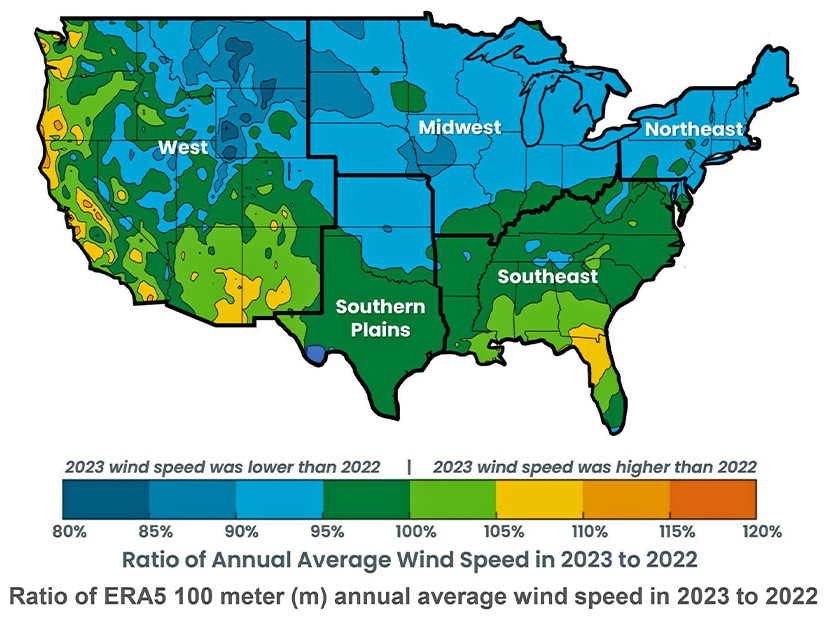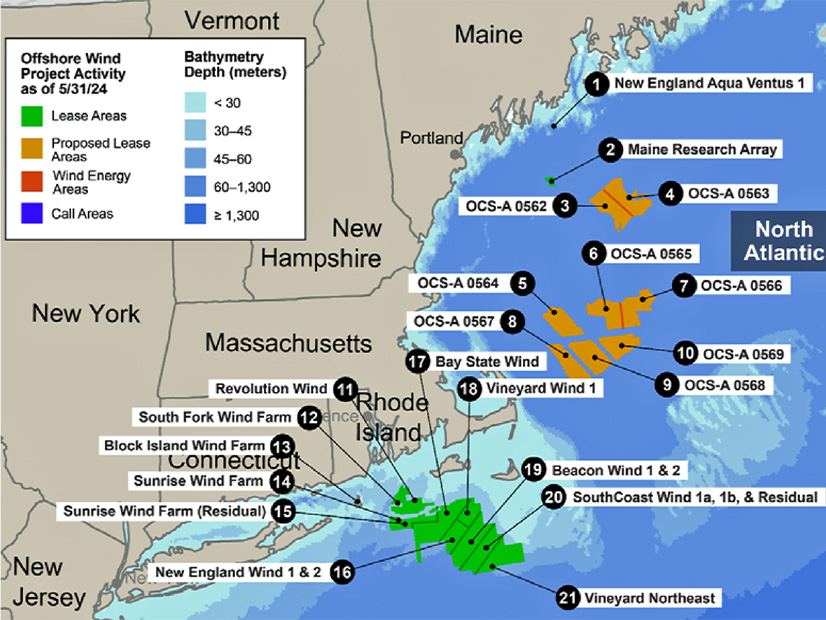The Bonneville Power Administration will delay its Western day-ahead market choice beyond a scheduled Aug. 29 announcement date and likely will extend the decision-making process into 2025, multiple sources told RTO Insider.
The sources, who are not authorized to speak on behalf of their organizations, shared those details a week after BPA Administrator John Hairston said he was “evaluating” the timeline for choosing between SPP’s Markets+ or CAISO’s Extended Day-Ahead Market (EDAM).
“There’s a lot of factors at play. There’s more to come in the next week or two,” one source said.
Speaking during the agency’s Aug. 15 Quarterly Business Review, Hairston said the agency was “balancing the need for a deliberate, transparent process with the urgency created by the decisions of our neighbors.”
Two of those neighbors, the six-state utility PacifiCorp and Oregon’s Portland General Electric, have signed implementation agreements with EDAM, while the Balancing Authority of Northern California, Idaho Power, the Los Angeles Department of Water and Power, and NV Energy have signaled their intent to join the CAISO-run market.
BPA staff in April issued a “leaning” recommending the agency choose Markets+ over EDAM, citing the SPP market’s independent governance and overall design as primary factors in the opinion. (See BPA Staff Recommends Markets+ over EDAM.)
The agency previously cited Aug. 29 as the date it would issue a “draft letter to the region” on a decision whether to join a day-ahead market and which market it would select, followed by a “final” letter in November. Two sources said a decision now could be delayed by as much as six months.
BPA spokesperson Doug Johnson told RTO Insider the agency still is evaluating the timeline and expects to provide more information the week of Aug. 26.
During the Aug. 15 call, Hairston acknowledged the progress the West-Wide Governance Pathways Initiative has made in “improving” CAISO’s state-run market governance without the need for legislative changes, but he also pointed to the legislative changes still needed to bring greater independence to the ISO’s EDAM and Western Energy Imbalance Market (WEIM), in which BPA is a participant. (See CAISO, WEM Boards Approve Pathways ‘Step 1’ Plan.)
“As I’ve said from the outset, BPA seeks to participate in a market that has a durable, effective and independent governance structure [that] provides fair representation to all market participants and stakeholders,” Hairston said. “I fully appreciate the magnitude of such a decision, and you have my commitment to continuing our deliberate, transparent process, with the aim of making a decision that is right for our customers and the region.”
Hairston and his agency face pressure on multiple fronts over the day-ahead market decision. Environmental and industry groups that favor development of a single West-wide market that expressly includes California, such as the Northwest Energy Coalition, have urged BPA to join EDAM to help maximize the “diversity benefit” of the West’s geographically distributed emissions-free resources through a market with the largest possible footprint.
Northwest utility regulators, who have no oversight authority over BPA, also signaled their preference for a single market based on EDAM when they helped launch the Pathways Initiative last summer. In separate letters earlier this year, Washington Gov. Jay Inslee cited the importance of a single West-wide market that includes California to meet state targets for emissions reductions, while Oregon Gov. Tina Kotek warned that “fragmentation will drive unnecessary costs, create new reliability risks and prevent fully utilizing the resources that customers across the region have paid for.”
The most significant political pressure materialized in a July 25 letter addressed to Hairston from the four U.S. Democratic senators representing Oregon and Washington.
In the letter, the senators urged the agency to delay its decision until more developments play out around Markets+ and EDAM and made clear they think the Northwest would see more benefit from one organized electricity market than two. They also directed BPA to answer 14 detailed questions about its “leaning” by Aug. 25 — a Sunday. (See NW Senators Urge BPA to Delay Day-ahead Market Decision.)
Further complicating matters for BPA: A week after the arrival of the senators’ letter, FERC issued SPP a deficiency notice covering multiple sections of the Markets+ tariff that the RTO filed in March, a concern cited by the senators. (See FERC Finds SPP Markets+ Tariff ‘Deficient’ in Several Areas.)
‘Lasting Consequences’
BPA also faces pressure in the other direction from many — although not all — of the publicly owned utilities that constitute its base of “preference” customers, who have advocated firmly for the agency to join Markets+. (See Northwest Public Power Group Endorses Markets+ over EDAM.)
On Aug. 21, a sizable cohort from that group sent their own response to the Northwestern U.S. senators, asking them to consider the impact of BPA’s day-ahead market decision on the region’s consumer- and tribal-owned utilities. Among the 47 signatories were Tacoma Power, Clark Public Utilities and the Snohomish, Chelan, Douglas and Grant county public utility districts in Washington; and Salem Electric, Umatilla Electric Cooperative and the Clatskanie, Emerald and Northern Wasco County people’s utility districts in Oregon.
“BPA’s decision will have lasting consequences for our ratepayers and your constituents,” the utilities wrote. “Although we support West-wide collaboration, the fiduciary obligation to our ratepayers drives our evaluation of day-ahead market options — as it should BPA’s decision.”
The letter reiterated BPA’s oft stated concern about EDAM’s California-run governance, saying “governance drives major policy outcomes and, therefore, the allocation of economic outcomes among the communities served through the market,” echoing a point made in a recent “issue alert” released by a group of entities that helped fund the “Phase 1” tariff development stage of Markets+. (See Governance is ‘Key Consideration’ for West, Markets+ Backers Say.)
While the utilities contend it was competition from Markets+ that motivated the effort to address CAISO’s market governance, they also doubt the Pathways Initiative can achieve “meaningful change” to California law because previous efforts “have always failed.” The utilities also argue EDAM was designed and approved under CAISO’s current “flawed governance,” and that it would take years to “unwind” the impact of that on a market design that disfavors Northwestern interests.
“Forcing BPA to delay participation in Markets+ and forgo a market with superior governance and market design frameworks on account of hopes that the West-Wide Governance Pathways Initiative may succeed would be irresponsible and harmful to our ratepayers,” they wrote.
But the utilities’ most notable concern is that pressure from the senators could delay BPA’s decision to help fund the “Phase 2” implementation stage of Markets+, which, they contend, would take pressure off the efforts to alter the WEIM/EDAM governance structure.
“BPA’s ongoing funding commitment to Markets+ is essential to the continued development of a day-ahead market that respects the policy, economic and regulatory interests of our ratepayers,” they wrote.
The Portland, Ore.-based Public Power Council (PPC) made a similar point in an Aug. 15 letter addressed to Hairston, which encouraged BPA to commit to funding Phase 2 of Markets+ to ensure the market “remains a viable option for BPA and other stakeholders in the West.
“This commitment should be formalized in a letter to the region, capturing the agency’s evaluation of market options to date,” the PPC wrote. “We acknowledge that this may result in a timing difference between BPA’s decision to fund the next phase in Markets+ and BPA’s overall decision on day-ahead market participation.”
Such a commitment would represent a significant financial investment for BPA. The cost for Phase 2 implementation —scheduled for 2025 through the first quarter of 2027— will run to about $150 million, SPP told RTO Insider. Whatever the actual figure, BPA will be on the hook to cover 17.4% of the funding costs, second only to Powerex’s 23.2% share, according to an SPP document.
BPA’s original share for funding Phase 1 was 15.2%, but all Phase 2 funders will face higher shares now that NV Energy, Western Area Power Administration’s Desert Southwest Region, Liberty Utilities and Arizona Electric Power Cooperative have pulled their support from Markets+.
During an Aug. 13 Markets+ Participants Executive Committee meeting, SPP staff told stakeholders they have SPP board approval to engage with lenders over Phase 2 funding agreements, which will be extended to participants by the end of the year. (See SPP Dispels Concerns over Markets+ Deficiency Letter.)
SPP expects its administrative costs to operate Markets+ to range between $65 million and $70 million annually.

